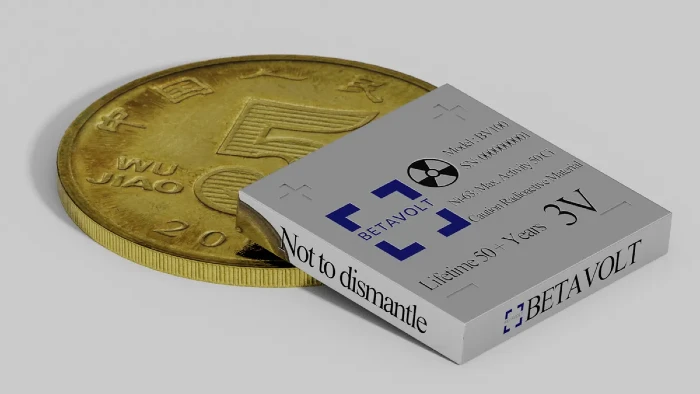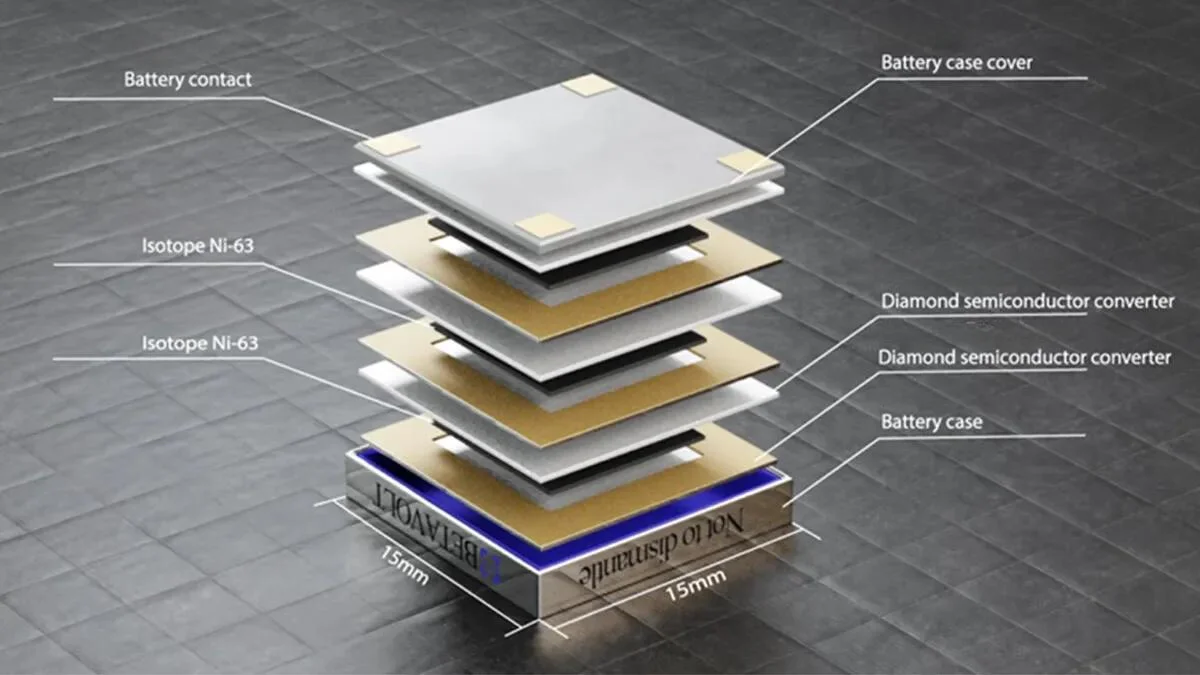Imagine never having to charge your phone again – not for a day, a year, or even a decade, but for half a century. This futuristic vision could soon be a reality, thanks to a Chinese company’s breakthrough in nuclear battery technology.
Betavolt Technology has pushed the boundaries of power sources by developing a nuclear battery tiny enough to fit in your phone, yet potent enough to keep your phone juiced up for 50 years. This battery, measuring just 15 x 15 x 5mm, harnesses the energy from 63 nuclear isotopes, creating 100 microwatts and 3V of electricity through radioactive decay.

Currently, in its pilot testing phase, Betavolt envisions these batteries not only in everyday gadgets like phones and drones but also in advanced fields like aerospace, AI, medical devices, and micro-robots. The company, inspired by the use of nuclear batteries in pacemakers and satellites, is working to upscale its technology to produce a 1-watt battery by 2025.
The implications are huge. Imagine a world where charging cables and power banks are relics of the past, where your devices run incessantly without the battery capacity waning over time, unlike today’s Li-ion batteries. Betavolt also claims their BV100 model is incredibly safe, resisting fires or explosions from punctures or gunshots, unlike some current batteries.
This innovation could transform our lives, offering drones that fly indefinitely, phones that never die, and electric cars that don’t need recharging. Currently, nuclear batteries power space missions and underwater systems, but they’re bulky, generate heat, and come with a hefty price tag. Betavolt, however, is charting a different course.
The secret lies in Betavolt’s design. They use nickel-63 as the energy source and diamond semiconductors as energy converters. A thin 2-micron nickel-63 sheet is sandwiched between diamond semiconductors, converting the decay energy of the radioactive source into an electrical current.

Betavolt’s batteries aren’t just long-lasting; they’re lightweight, operate in extreme temperatures, and can be modularly combined for greater power output. This could revolutionize automotive technology and AI systems.
However, there’s a catch. The idea of carrying nuclear material might not sit well with everyone, especially in the shadow of nuclear incidents like Chernobyl and Fukushima.
More To Discover
- The Zero-Energy Ultrathin Film That Can Protect Crops and Slash Food Waste
- The Chia-Chair: Redefining Furniture as Living Ecosystems
- Hottest Year in 125,000 Years, Yet #ClimateScam Trends: Why Climate Change Denial Persists Despite Overwhelming Evidence
- France Just Made Composting Mandatory And It’s Expected To Make A Big Difference
Betavolt acknowledges these concerns, reassuring that the battery has no external radiation and is safe enough for medical devices implanted in the human body.
At the end of its life, the battery’s nuclear isotopes turn into non-radioactive copper, posing no environmental threat. This technology, reminiscent of 1950s science fiction, promises to usher in a new era of unwired, always-on devices and potentially revolutionize the use of nuclear energy.





















